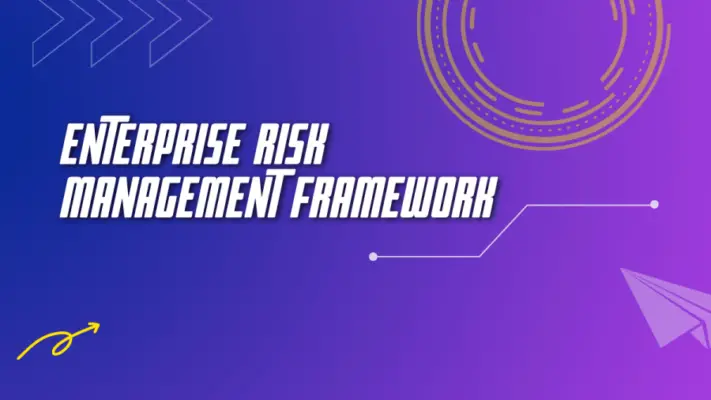Risk and Control Self-Assessment (RCSA) is crucial in operational risk management because it promotes risk identification and mitigation from a bottom-up perspective (source: Risk Publishing).
It facilitates risk/control monitoring and reporting and helps to assess operational risks and identify weaknesses in controls (source: FinLync).
Additionally, a well-rounded RCSA framework boosts transparency, presents detailed data on control activities, and provides substantive evidence required by operational risk managers (source: Risk Publishing).
In the field of operational risk management, the Risk Control Self-Assessment (RCSA) process plays a crucial role in identifying, assessing, and mitigating risks.
This article explores the significance of RCSA, highlighting its definition, benefits, challenges, and strategies to create an effective program.
Organizations can use RCSA to proactively manage and mitigate operational risks, adhering to industry best practices and enhancing the overall risk management framework.

Definition of RCSA
The definition of RCSA, or Risk Control Self-Assessment, is a crucial aspect of operational risk management.
RCSA is a process that enables organizations to identify, assess, and mitigate operational risks by involving key stakeholders in the risk assessment process.
Purpose of RCSA in Operational Risk Management
The purpose of Risk Control Self-Assessment (RCSA) in Operational Risk Management is to identify, assess, and mitigate risks through a structured and proactive approach.
RCSA is a control self-assessment process that involves the operational risk manager and other relevant stakeholders in assessing the effectiveness of internal controls in managing potential risks.
By conducting an RCSA, the operational risk manager can identify control weaknesses and take corrective actions to strengthen the control environment.
This process also helps evaluate risk control measures and enhance risk management capabilities.
RCSA provides a comprehensive understanding of the organization’s risks, allowing for better decision-making and prioritization of resources.
Organizations can effectively manage operational risks and protect assets through this proactive and structured approach.
Benefits of RCSA
The implementation of RCSA in operational risk management brings numerous benefits to organizations.
Firstly, it helps create an improved control environment by identifying and assessing risks effectively, leading to enhanced risk mitigation strategies.
Secondly, RCSA enables organizations to achieve better risk identification and assessment, enabling them to manage potential risks proactively.
Lastly, using RCSA enhances efficiency and accuracy in risk management processes, reducing the likelihood of regulatory violations and financial losses.
Improved Control Environment
An improved control environment is one of the key benefits of implementing Risk Control Self-Assessment (RCSA) in operational risk management.
RCSA allows organizations to assess and evaluate their risk exposures, identify key risk indicators, and determine the effectiveness of controls.
This leads to developing a stronger control environment, which is crucial for mitigating operational risks.
Some of the specific benefits of an improved control environment through RCSA include:
- Enhanced risk assessments: RCSA enables organizations to conduct comprehensive risk assessments, identifying potential risks and their impact on the business.
- Control self-assessment: RCSA empowers employees at all levels to participate in the assessment of risks and controls, fostering a culture of risk awareness and accountability.
- Clear ownership of risks: RCSA helps assign risk ownership to individuals within the organization, ensuring that risks are actively managed and monitored.
- Strengthened effectiveness of controls: RCSA provides a framework for evaluating the effectiveness of controls, allowing for necessary adjustments and improvements to be made.
Improved Risk Identification & Assessment
Improved risk identification and assessment is a significant advantage of implementing Risk Control Self-Assessment (RCSA) in operational risk management.
Regular RCSA helps businesses identify and mitigate operational risks.
This process involves engaging employees at all organizational levels to identify and evaluate risks, creating a comprehensive understanding of the risk profile and levels within the organization.
Through this collaborative approach, risks can be accurately rated and reported, allowing for informed decision-making and appropriate risk mitigation strategies to be implemented.
RCSA also helps develop a strong organizational risk culture, promoting proactive risk monitoring and establishing a corrective action plan.
Ultimately, improved risk identification and assessment through RCSA enhances overall risk management and protects stakeholders’ interests.
Enhanced Efficiency & Accuracy
Implementing Risk Control Self-Assessment (RCSA) in operational risk management enhances efficiency and accuracy in identifying and assessing potential organizational risks.
This approach offers several benefits that contribute to the overall improvement of the operational risk management framework.
These benefits include:
- Streamlined risk controls: RCSA enables organizations to establish a systematic process for identifying and implementing risk controls. This ensures that the necessary measures are in place to mitigate potential risks effectively.
- Targeted risk evaluation: By conducting regular RCSA-based risk assessments, organizations can prioritize risk management based on the severity and likelihood of potential risks. This helps allocate resources and attention to areas that require immediate attention.
- Clear risk ownership: RCSA helps define and assign risk ownership responsibilities to individuals or departments within the organization. This ensures accountability and promotes a proactive approach to managing operational risks.
- Enhanced risk management practices: RCSA facilitates a structured and standardized approach to risk management, promoting consistency and best practices across the organization. This leads to improved risk management outcomes and greater operational resilience.
Reduced Regulatory Violations & Financial Losses
Organizations can significantly reduce regulatory violations and financial losses by incorporating Risk Control Self-Assessment (RCSA) into their operational risk management.
RCSA enables organizations to identify and assess regulatory risks across various business units, helping them to align their operations with regulatory requirements.
This proactive approach allows organizations to avoid potential violations, minimizing the risk of financial penalties and reputational damage.
RCSA provides a structured framework for organizations to assess their risk landscape and determine their risk appetite.
Organizations can identify and evaluate potential regulatory risks through regular RCSA exercises, allowing informed risk decisions and necessary control implementation.
The process also helps identify areas of potential financial losses and enables organizations to take corrective actions to mitigate these risks.
To illustrate the benefits of RCSA in reducing regulatory violations and financial losses, the following table highlights the key advantages:
| Benefits of RCSA | Description |
|---|---|
| Identification of regulatory risks | RCSA enables organizations to manage regulatory risks and implement necessary controls proactively. |
| Alignment with regulatory requirements | RCSA ensures that organizations comply with regulatory requirements, reducing the risk of violations. |
| Proactive risk management | Minimization of financial losses and penalties |
| Minimization of financial losses & penalties | Minimization of financial losses & Penalties |
Challenges of Implementing RCSA
Implementing RCSA in operational risk management can be challenging due to the complexity of risk management processes.
Organizations must navigate through various business units and align consistent definitions and terminology to ensure accurate risk assessments.
Additionally, they must stay updated with changing business conditions and regulatory requirements to identify and address operational risks effectively.

Understanding the Complexity of Risk Management Processes
One of the key challenges in operational risk management is the inherent complexity of risk management processes.
Understanding the complexity of these processes is crucial for implementing RCSA effectively.
Here are some reasons why risk management processes can be complex:
- Multiple stakeholders: Risk management involves coordination and collaboration among various stakeholders, such as senior management, operational teams, and compliance officers.
- Diverse risk types: Operational risk encompasses a wide range of risk types, including fraud, technology, and human error. Managing and assessing these different risk types can be challenging.
- Data collection and analysis: Gathering relevant data and conducting thorough analysis is necessary for effective risk assessment. However, this process can be time-consuming and require specialized skills.
- Regulatory requirements: Compliance with regulatory guidelines adds another layer of complexity to risk management processes.
To implement RCSA successfully, organizations must navigate these complexities by establishing clear processes, leveraging technology, and fostering a risk-aware culture.
Identifying and Addressing Changing Business Conditions
Identifying and addressing changing business conditions presents a significant challenge in implementing RCSA for operational risk management.
As the business environment evolves, new risks emerge, and existing risks may change their nature or impact.
To effectively manage operational risks, organizations need to monitor and adapt their risk management processes continuously.
This involves identifying risks, assessing risk events, developing risk mitigation plans, and understanding the potential risk of loss resulting from changing business conditions.
It is crucial to establish a comprehensive risk taxonomy and a holistic approach to risk management that considers the impact of risks across the organization.
Implementing robust risk frameworks and systems can enable organizations to proactively identify and address changing business conditions, enhancing their ability to manage operational risks effectively.
| Key Challenges | Solutions |
|---|---|
| Identification of risks | Regular risk assessment and monitoring |
| Risk mitigation plans | Developing strategies to address identified risks |
| Risk taxonomy | Establishing a comprehensive framework for categorizing risks |
| Approach to risk management | Adopting a holistic and proactive approach to managing risks |
| Impact of risks | Evaluating the potential consequences and implications of identified risks |
| Risk frameworks and systems | Implementing robust systems and frameworks to support risk management processes |
Developing Consistent Definitions and Terminology Across Business Units
To ensure the effective implementation of RCSA in operational risk management, a crucial challenge is developing consistent definitions and terminology across business units.
This is important because there can be confusion and miscommunication when it comes to identifying and managing risks without consistent definitions and terminology.
In order to address this challenge, senior management should take the lead in establishing and enforcing standardized definitions and terminology across the organization.
This can be achieved through regular communication and training sessions with employees.
Additionally, involving external auditors and leveraging enterprise risk management frameworks can provide guidance and ensure consistency across business units.
Clear and consistent definitions and terminology are crucial for accurately assessing and documenting risks, identifying weaknesses in business processes, implementing effective controls, and monitoring the risk environment to achieve the primary objectives of operational risk management.
Aligning with Regulatory Requirements and Compliance Standards
Aligning with regulatory requirements and compliance standards is a significant challenge in implementing RCSA in operational risk management.
Regulatory bodies across various industries have established specific guidelines and standards that organizations must adhere to to ensure their operations’ safety and stability.
Implementing RCSA involves incorporating these regulatory requirements and compliance standards into the risk assessment process.
One of the challenges in aligning with regulatory requirements is the need for a comprehensive understanding of the specific regulations that apply to the organization’s industry.
This requires continuous monitoring and interpretation of regulations to ensure compliance.
Additionally, organizations must ensure that their risk culture maturity aligns with regulatory expectations, impacting their ability to identify and manage risk drivers.
Another challenge is the complexity of aligning regulatory requirements with various business activities.
Organizations must identify and address gaps or inconsistencies between their existing processes and the regulatory standards. This may require updating policies, procedures, and controls to ensure compliance.
How to Create an Effective RCSA Program?
Creating an effective RCSA program requires establishing a strong risk culture and a clear governance structure.
This involves ensuring that risk management is embedded within the organization’s values and behaviors and that roles and responsibilities for risk management are clearly defined.
Additionally, developing standard operating procedures and policies for conducting RCSAs is essential to ensure consistency and effectiveness in the risk assessment.
Establish a Risk Culture & Clear Governance Structure
A crucial step in operational risk management is establishing a robust risk culture and implementing a clear governance structure to create an effective RCSA program.
This ensures that an organization has a comprehensive risk management approach in place to meet its operational risk requirements.
To successfully establish a risk culture and clear governance structure, organizations should consider the following:
- Clearly define and communicate the organizational risk profile, including risk appetite and tolerance levels.
- Implement a structured process of risk identification to identify and assess potential risks.
- Develop control frameworks to mitigate identified risks and establish control measures.
- Conduct regular control assessments to ensure the effectiveness of control management.
- Implement a control taxonomy to categorize and classify controls based on their purpose and effectiveness.
Develop Standard Operating Procedures and policies for Conducting RCSAs
To create an effective RCSA program, it is essential to develop standard operating procedures and policies for conducting RCSAs.
These procedures and policies serve as a framework for conducting risk management activities and ensure consistency and accuracy in the RCSA process.
Standard operating procedures provide guidelines for identifying, assessing, and mitigating key risks within an organization.
They outline the steps to be followed, the roles and responsibilities of individuals involved, and the documentation requirements.
On the other hand, policies establish the overall approach to conducting RCSAs, including using the key risk indicator approach and assessing additional risks.
Frequently Asked Questions
What Common Operational Risks Can Be Identified and Mitigated Through Rcsa?
Some common operational risks that can be identified and mitigated through RCSA include financial fraud, technology failures, human errors, regulatory compliance issues, supply chain disruptions, and reputational damage.
RCSA plays a crucial role in proactively managing these risks.
How Does RCSA Differ From Other Risk Management Techniques, Such as Internal Audits or Risk Assessments?
RCSA differs from other risk management techniques, such as internal audits or risk assessments, in that it is a proactive approach that involves identifying and mitigating operational risks before they occur, making it an essential tool in operational risk management.
Is RCSA Applicable to All Industries or Are There Specific Sectors That Can Benefit More From Its Implementation?
RCSA, or Risk Control Self-Assessment, is an important tool in operational risk management. It helps organizations identify, assess, and mitigate risks. While applicable to all industries, certain sectors may benefit more from its implementation due to specific risk profiles.
Can RCSA Be Integrated With Existing Risk Management Frameworks or Does It Require a Separate System?
RCSA can be integrated with existing risk management frameworks, as it provides a structured approach to identify and assess operational risks.
However, it may require some modifications to align with the organization’s specific needs.
What Are Some Best Practices for Ongoing Monitoring and Updating of RCSA Programs?
Some best practices for ongoing monitoring and updating of RCSA programs include regular assessments, engaging key stakeholders, ensuring data accuracy, implementing effective reporting mechanisms, and aligning with regulatory requirements and industry standards.

Conclusion
RCSA (Risk Control Self-Assessment) is a crucial component of operational risk management.
It provides a systematic approach for identifying, assessing, and managing organizational risks.
RCSA offers several benefits, such as increased risk awareness, improved risk mitigation strategies, and enhanced decision-making processes.
However, implementing RCSA can pose challenges, including resource allocation and cultural resistance.
To create an effective RCSA program, organizations should establish clear objectives, foster a risk-aware culture, and ensure regular monitoring and review of risk controls.

Chris Ekai is a Risk Management expert with over 10 years of experience in the field. He has a Master’s(MSc) degree in Risk Management from University of Portsmouth and is a CPA and Finance professional. He currently works as a Content Manager at Risk Publishing, writing about Enterprise Risk Management, Business Continuity Management and Project Management.

